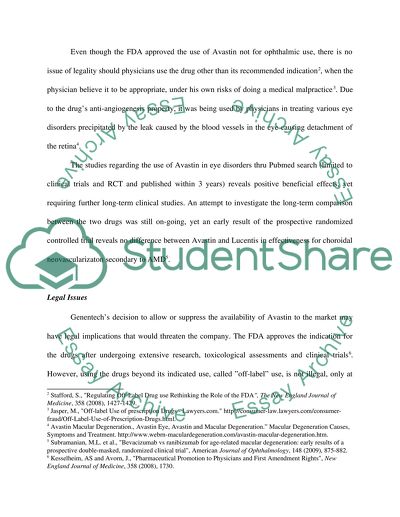Cite this document
(Drug Companys Restriction of Distribution of a Drug: A Genentech on Case Study, n.d.)
Drug Companys Restriction of Distribution of a Drug: A Genentech on Case Study. Retrieved from https://studentshare.org/medical-science/1573033-genentechs-move-to-restrict-the-use-of-its-drug-avastin-its-cancer-drug-by-ophthalmologists-on-eye
Drug Companys Restriction of Distribution of a Drug: A Genentech on Case Study. Retrieved from https://studentshare.org/medical-science/1573033-genentechs-move-to-restrict-the-use-of-its-drug-avastin-its-cancer-drug-by-ophthalmologists-on-eye
(Drug Companys Restriction of Distribution of a Drug: A Genentech on Case Study)
Drug Companys Restriction of Distribution of a Drug: A Genentech on Case Study. https://studentshare.org/medical-science/1573033-genentechs-move-to-restrict-the-use-of-its-drug-avastin-its-cancer-drug-by-ophthalmologists-on-eye.
Drug Companys Restriction of Distribution of a Drug: A Genentech on Case Study. https://studentshare.org/medical-science/1573033-genentechs-move-to-restrict-the-use-of-its-drug-avastin-its-cancer-drug-by-ophthalmologists-on-eye.
“Drug Companys Restriction of Distribution of a Drug: A Genentech on Case Study”, n.d. https://studentshare.org/medical-science/1573033-genentechs-move-to-restrict-the-use-of-its-drug-avastin-its-cancer-drug-by-ophthalmologists-on-eye.


